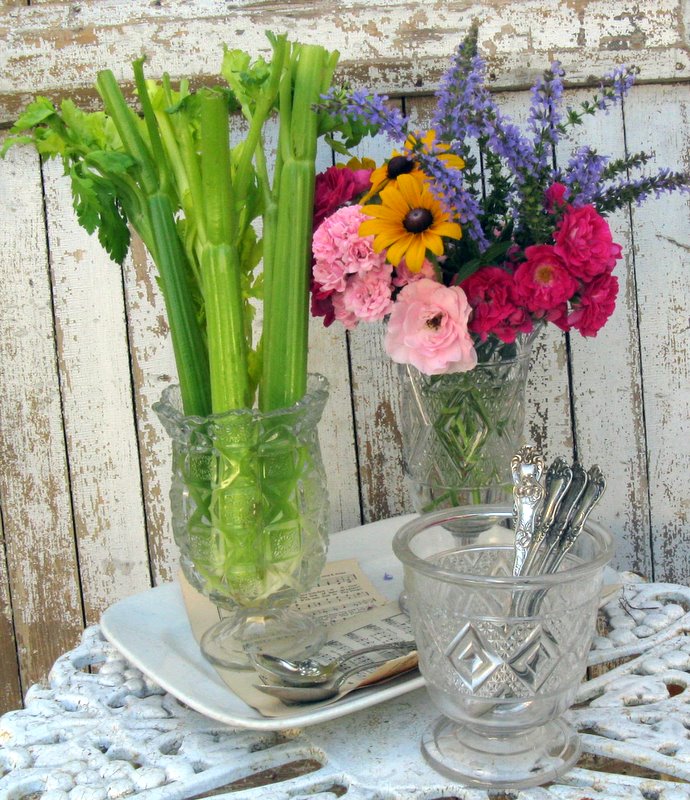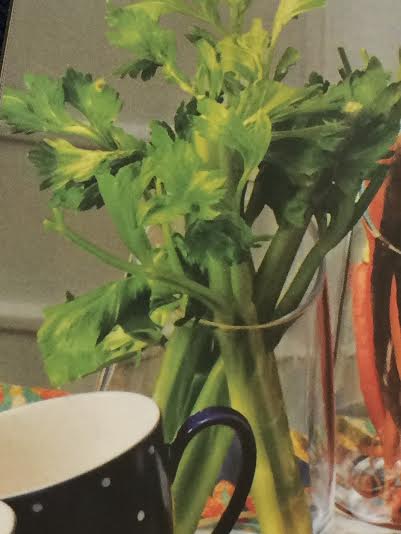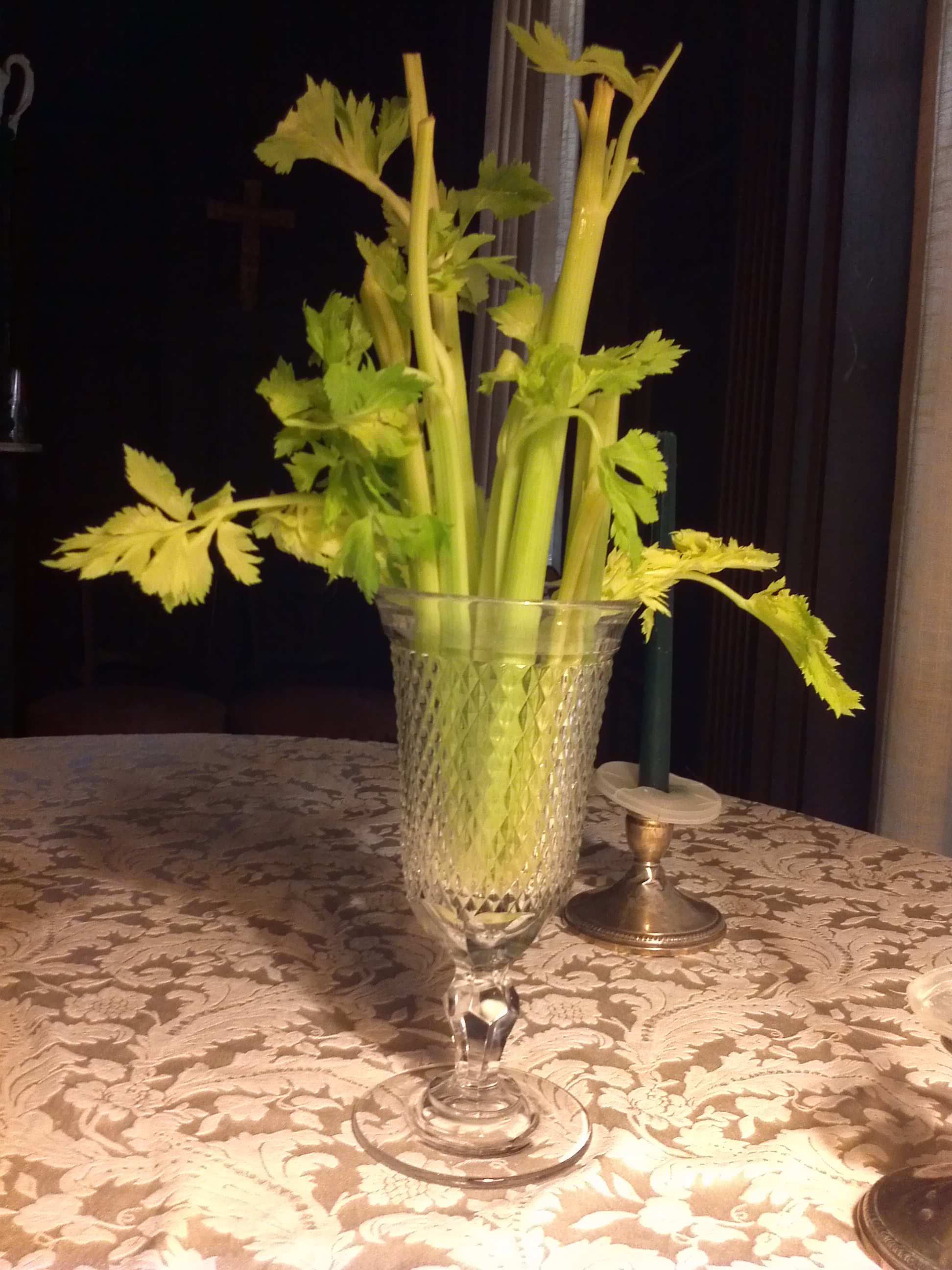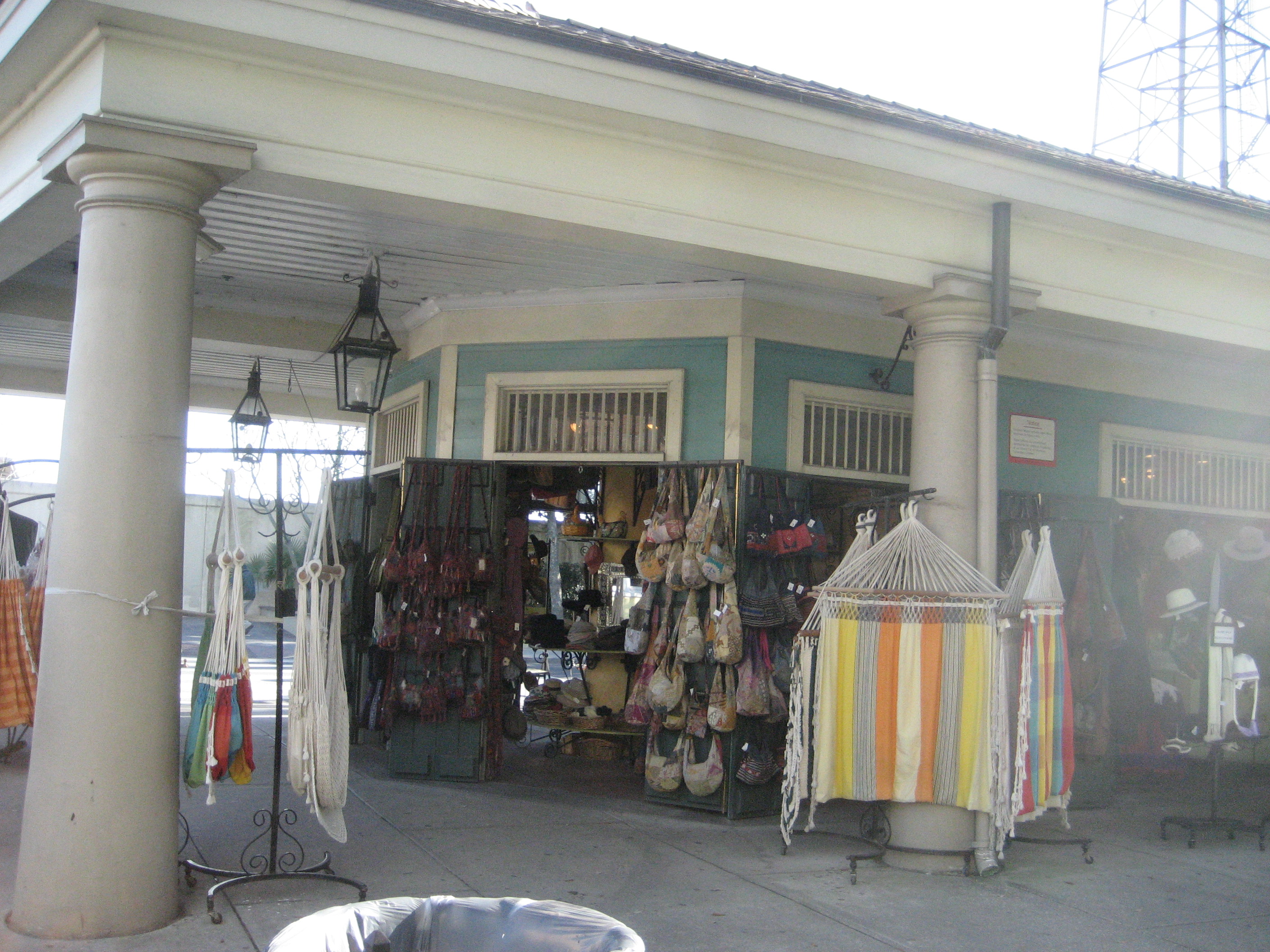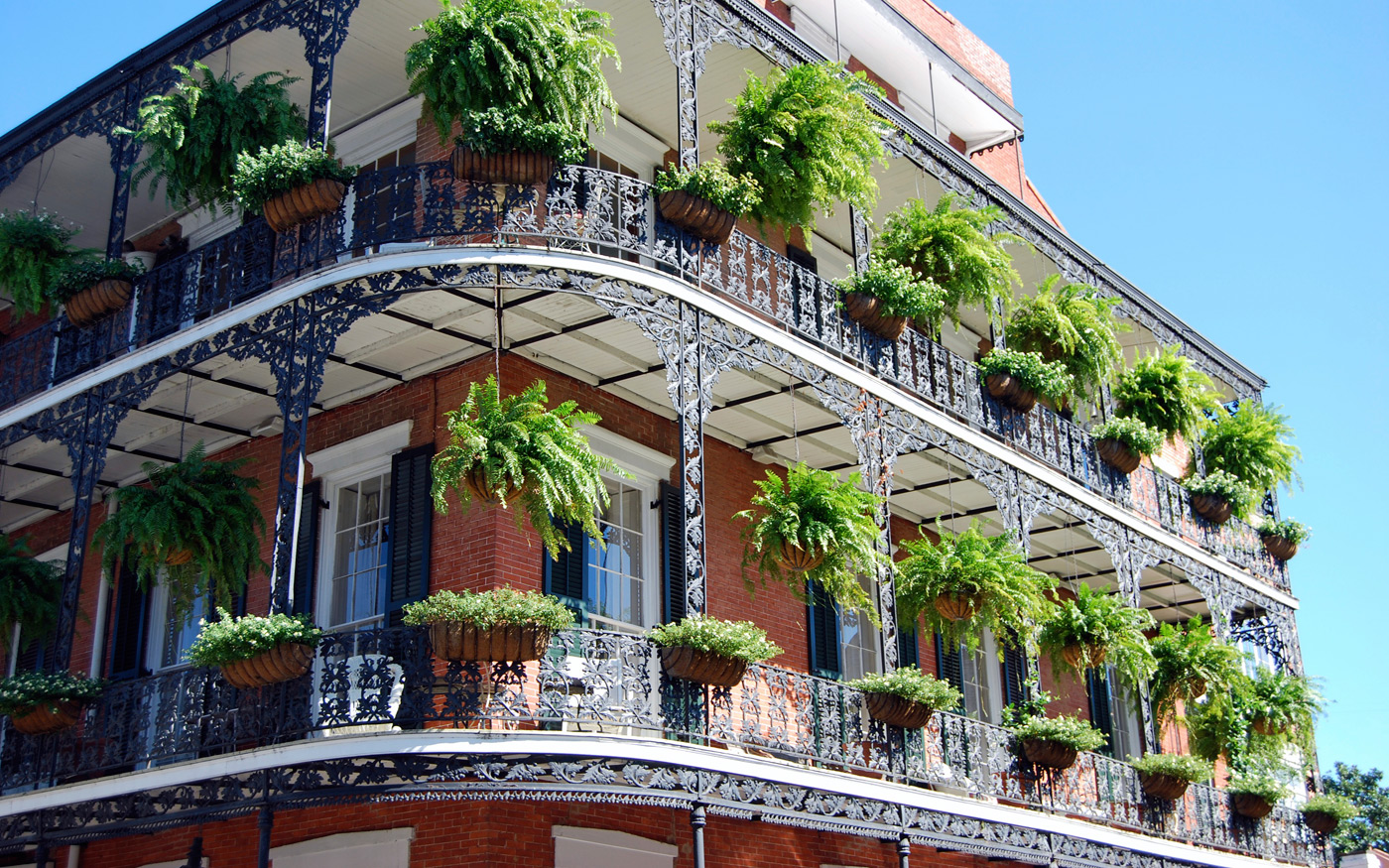The Victorian Celery Vase
(Mary Reporting) On a recent visit to Cape May, New Jersey, I enjoyed a tour of the Emlen Physick estate, built in 1879. The first-floor rooms with original furnishings are open to the public.
In the dining room, the table was set for dinner with an elaborate array of china, glassware and silver. In the midst of these signs of wealth sat a crystal vessel resembling a vase, but filled with stalks of pale green plastic celery.
I could forgive the plastic in the interest of practicality. But celery? How did the bland vegetable most of us employ only as a seasoning in stuffing, salads and soups earn such a grand presentation?
The docent explained that the Victorians loved to show off their wealth. And celery cost a great deal of money. In America in the 1870s to 1880s, prominently displayed celery left no question that the hostess could afford every luxury—in her choice of a vegetable and in the elaborate urn of cut glass in which it was served.
No doubt the beauty of the celery vessel, which varied in height from six to nine inches, and in materials from sterling silver to lead crystal, enabled diners to focus on the serving dish and not the taste of the stringy—in my opinion—nearly unpalatable vegetable.
They say the Romans ate wild celery, but its cultivation didn’t begin until the sixteenth century. Apparently it used to be tortuous to grow. The website, www.patternglass.com, which sells many varieties of celery vases today, reports that the crown had to be covered with soil to keep it tender. Some farmers even transplanted it mid-season to “set it back,” which also made it tender. The plant required moisture, but not too much or it would rot. The labor involved in the fields led to its sky-high price.
Victorian cooks carefully scraped and washed the stalks and then arranged these in a fine urn filled with cold water. A vinaigrette sauce was served separately.
Through the years, as new easier-to-grow varieties of celery were developed, it became common and inexpensive in grocery stores. With the vegetable’s decline as a luxury, it lost its prominence on dining tables and the vases went out of use as well.
Today, celery is touted as a wonderful health food, especially when dipped into hummus. And it’s always been popular with children if enough peanut butter were spread in the channel. Parents who added a few raisins on top, and called it “ants on a log,” even convinced their preschoolers that celery qualified as a tasty treat.
If you’d like to display celery on your table, celery urns are still available from antique stores and internet sites. Plain glass ones are under $50. If you’re interested in ostentation, eBay has some rare urns with bids starting upwards of $4,000.
More Celery Vases
Celery Vases
(Mary reporting) With celery vases on my mind, I remembered a glass vessel in my grandmother’s china cabinet that she rarely if ever used. When she did put it on the table, it held flowers. She served celery in an oblong glass dish.
I called my sister who still lives in the family home in Mobile and asked her to do a glassware search. Sure enough, the object I recalled is still there. She sent a photo of what I’m fairly certain is a celery vase.
The following day Bloomingdale’s September “Hot Home Fashion” catalogue arrived on my doorstep. There, amid the Kate Spade casual dinnerware was a vase filled with celery stalks. Two vases, side by side, were called into service to handle celery and carrots. What goes around comes around.

